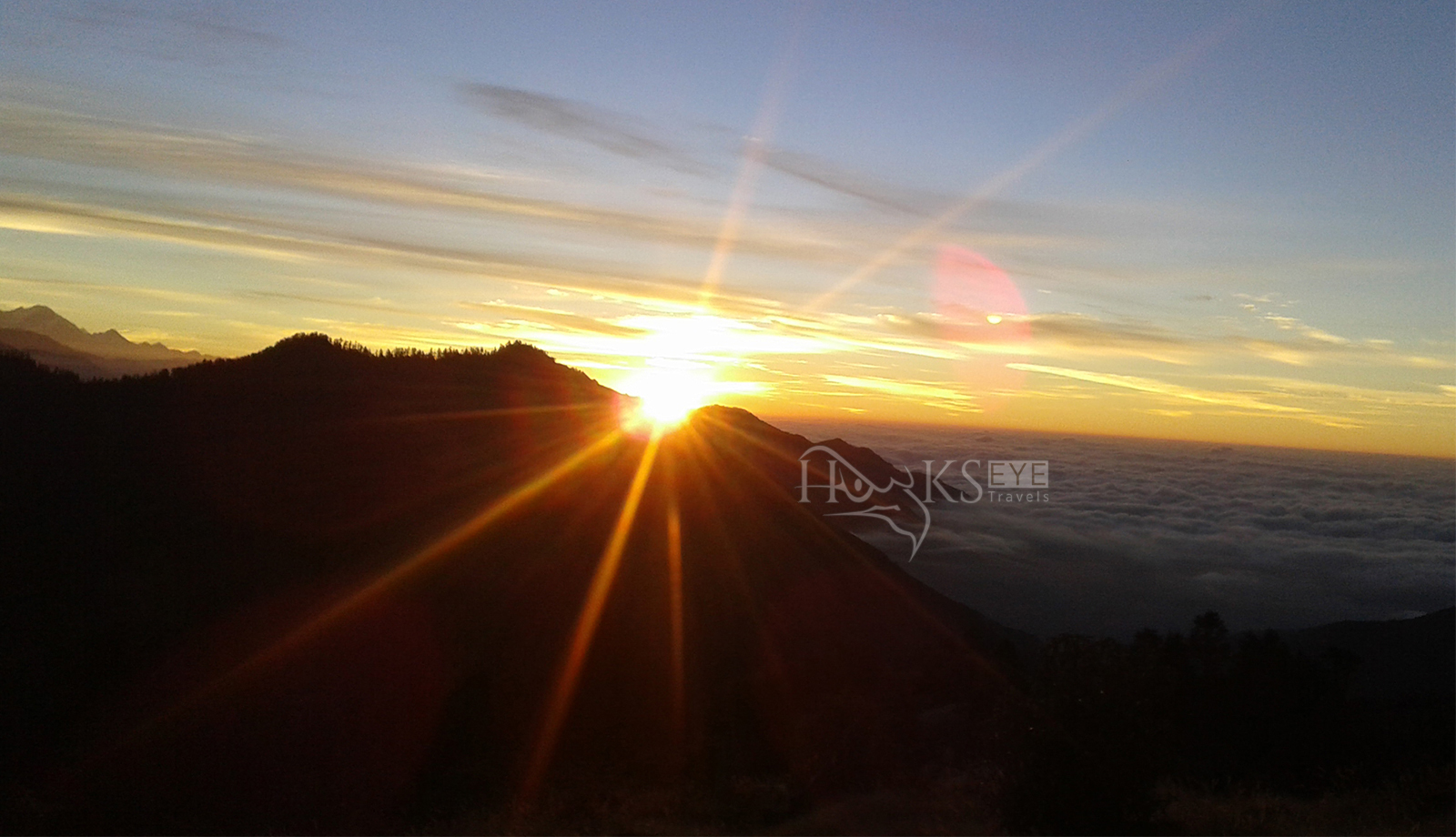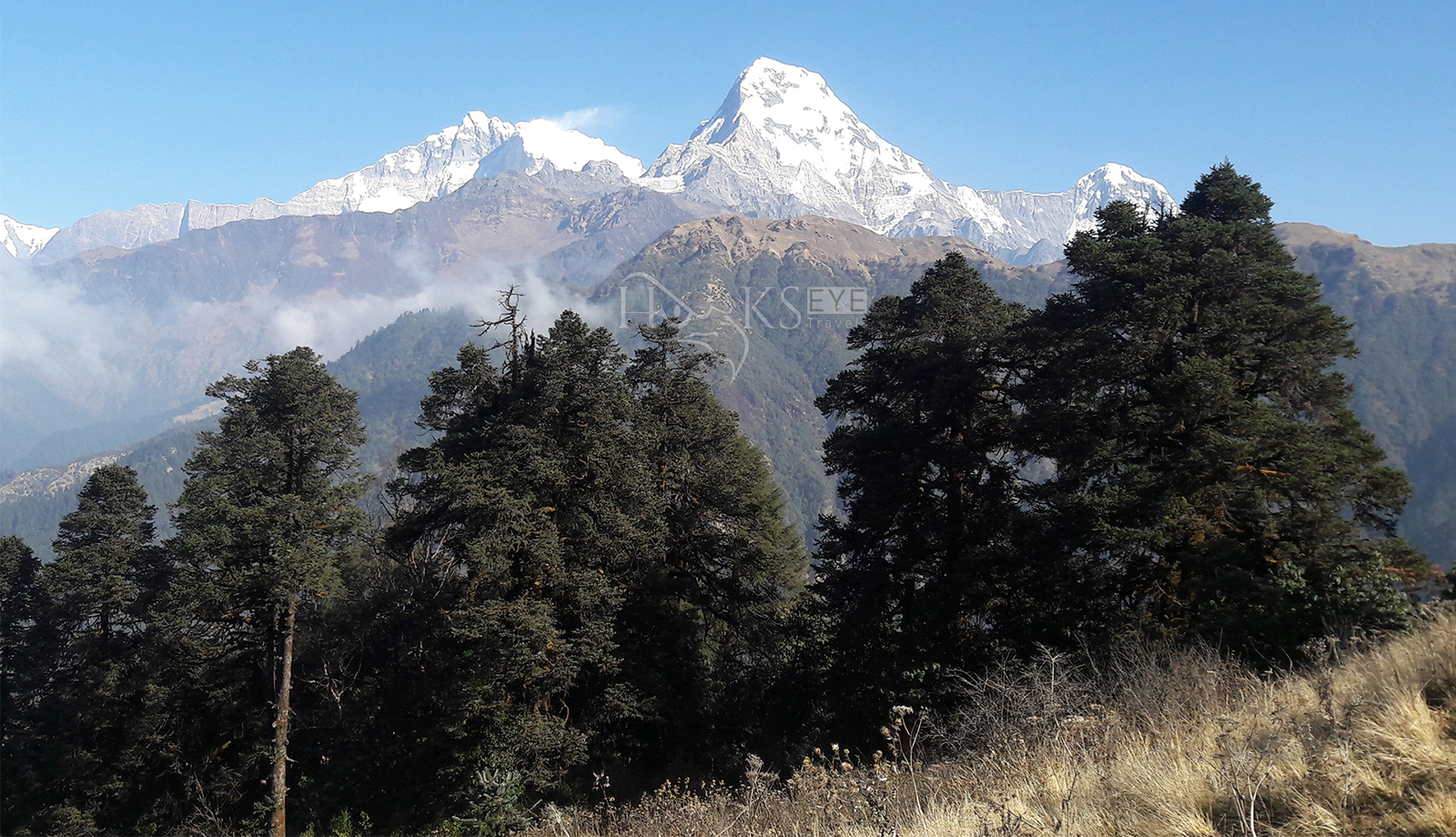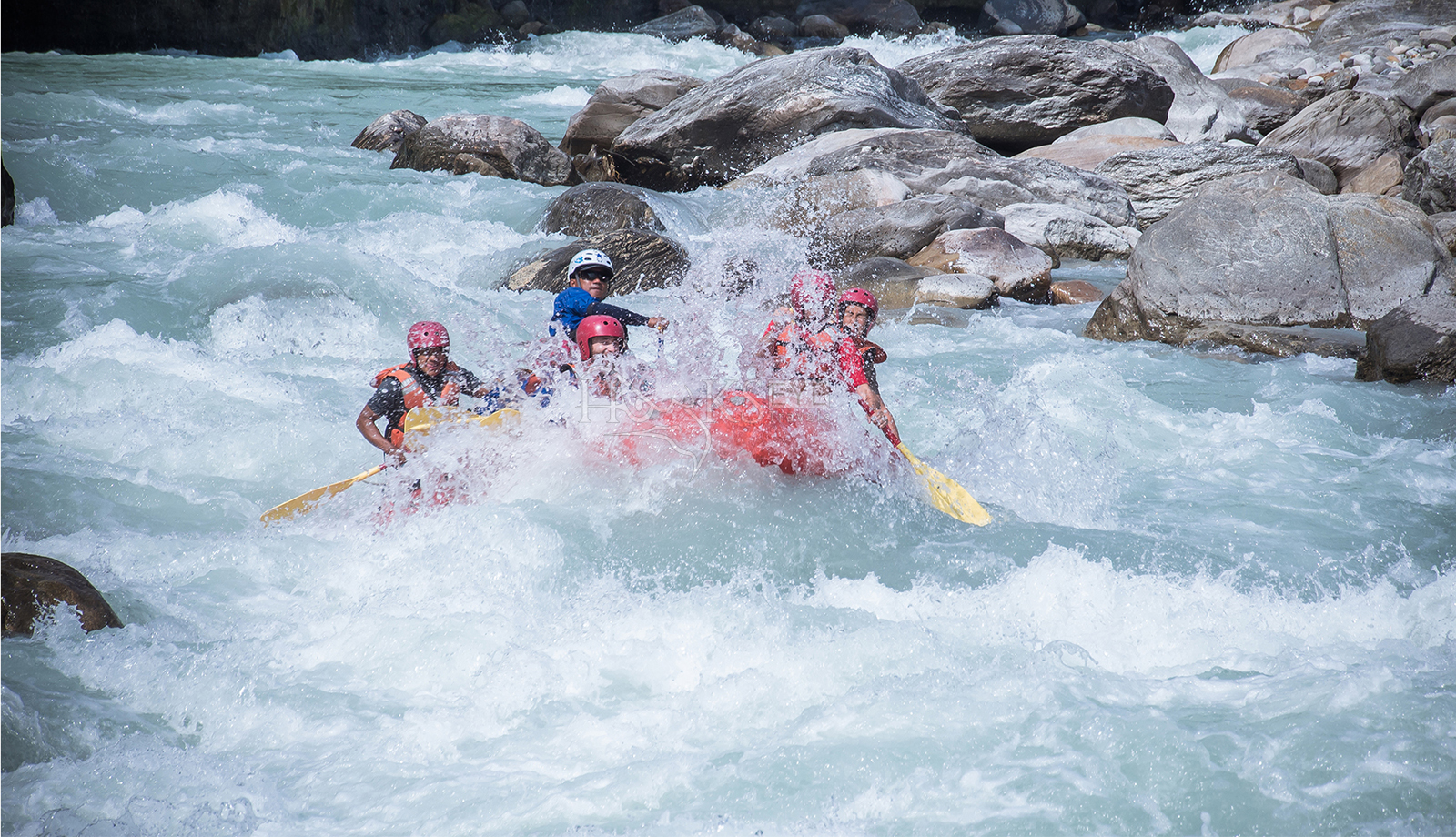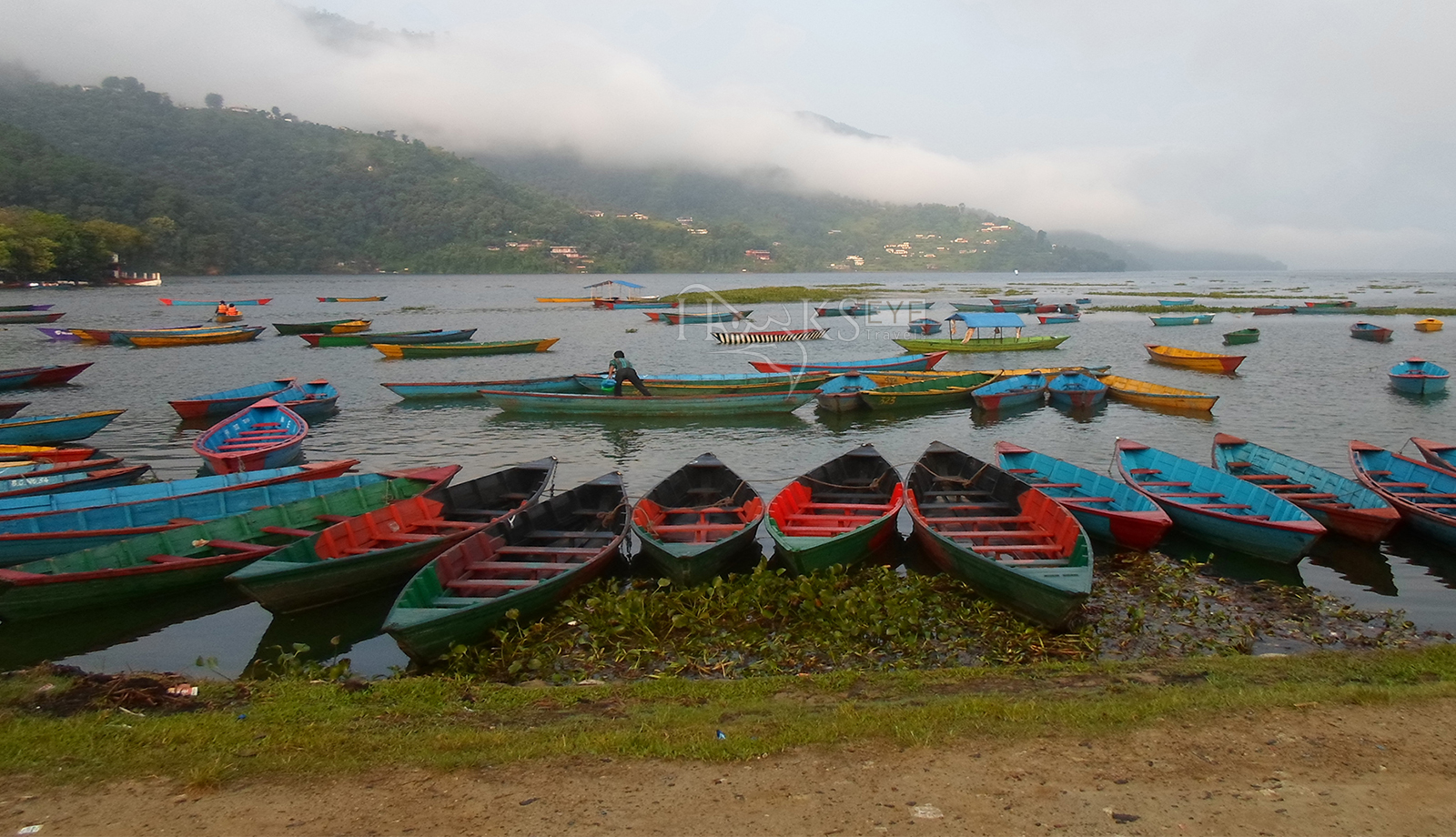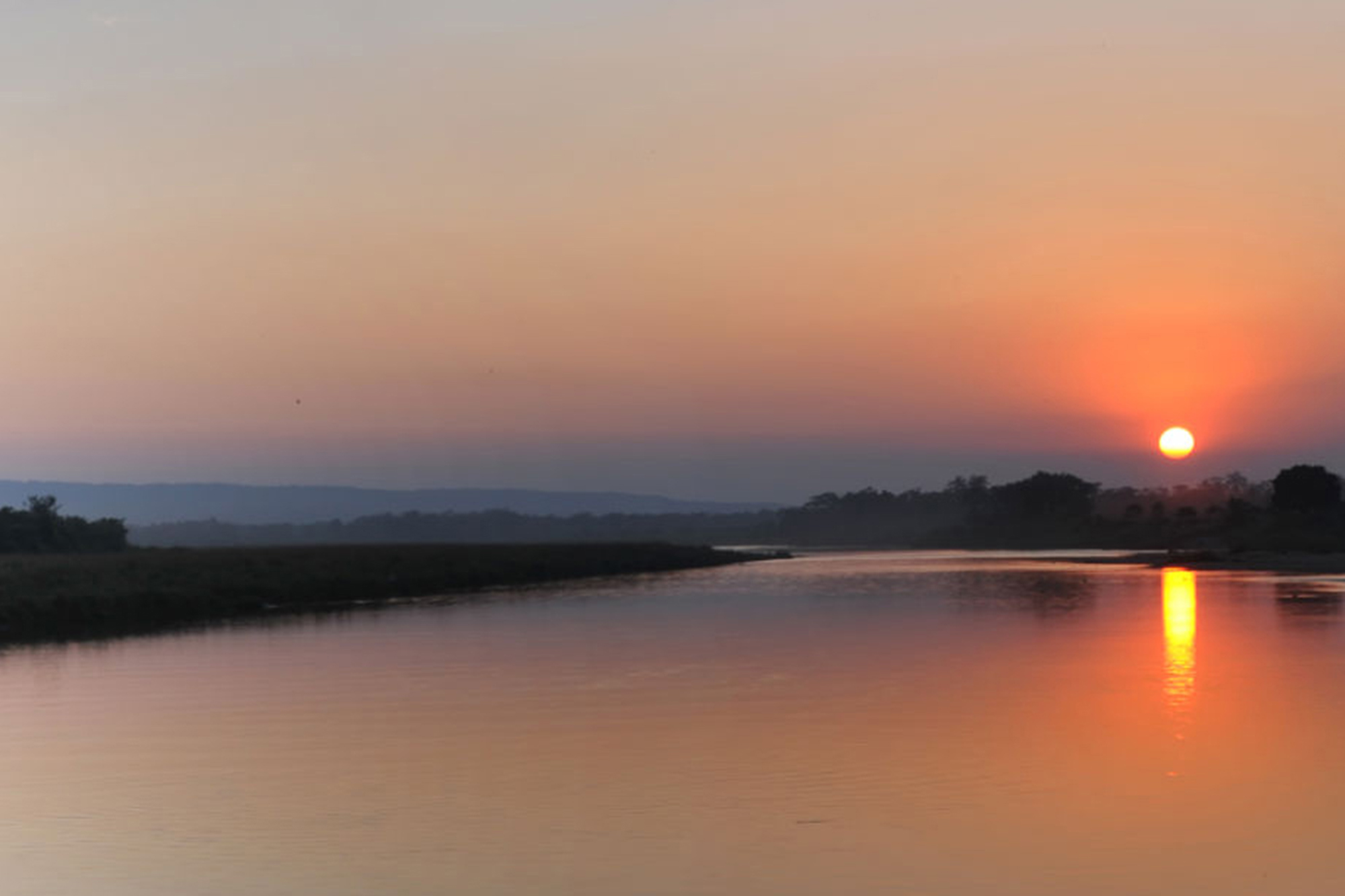On arrival in Kathmandu airport our representative will greet you and escort you to your hotel. A short briefing will be provided about the next day program. You will have rest of the day at leisure.
Honeymoon Adventure

-
Trip Duration: 17 Days
-
Start - End: Kathmandu - Kathmandu
-
Highest Altitude3200 m
-
DifficultyModerate
-
Price 1897
-
SeasonJan - May, Sep-Dec
-
ActivityHoneymoon
The adventure trips is designed for the couple who just love adventure stuffs and want to continue it as a part of their honeymoon. The trip has it all what an adventure couple loves. We begin the trip with soft landing in Kathmandu and visit its beautiful site and start our adventure with biking followed by free fall jump from 160 meter, paraglide from 2000 ft, hike up the mountains and paddle down wild rapids and end the trip with animal encouter in wild jungle. The trip definitely will add more adventure and makes it a life time experience in your life.
- Day 01: Arrival in Kathmandu
- Day 02: Sightseeing tour in Kathmandu and drive to Nagarkot
- Day 03: Biking to Dhulikhel
- Day 04: Dhulikhel- Bungy or Tandum swing- Kathmandu
- Day 05: Fly to Pokhara, sightseeing
- Day 06: Paragliding and leisure time for boating
- Day 07: Pokhara- Tikhedhunga
- Day 08: Tikhedhunga- Ghorepani
- Day 09: Ghorepani-Poonhill- Tadapani
- Day 10: Tadapani - Ghandruk
- Day 11: Ghandruk - Pokhara
- Day 12: Drive and Raft in Seti River
- Day 13: Raft and Chitwan national park
- Day 14: Dugout canoe trip
- Day 15: Back to Kathmandu
- Day 16: Leisure day
- Day 17: Final departure
You could either start the day with early wake up to see the increadable sunrise or just relax and enjoy your breakfast. After breakfast get ready for two hours mostly down hill ride, we head short uphill to the view tower of Nagarkot and down hill to Nala where you could see a famous hindu temple and we continue our biking to Dhulikhel, which is another popular sites to see the mountain views. After reaching Dhulikhel you could either takes rest or if you still like to ride further then we would take to the Buddhist pilgrmate site of Namobuddha monastery which takes about 3 hours of more riding for round trip.
After breakfast we take about 2 hours of drive to try one of the highest bungy jump from 160 meter hight or you could do Tandum swing as a couple from 160 meter bridge down to the river. After amazing and scary jump we head back to Kathmandu for overnight.
We take thirty minutes flight to reach beautiful city of Pokhara.The northern skyline of the city offers a very close view of the Himalayas. Its pristine air, spectacular backdrop of snowy peaks, serene lakes and surrounding greenery make it ‘the jewel in the Himalaya’, a place of remarkable natural beauty. The flight itself gives us the mesmerizing view over the Himalayas. Uppon arrival at pokhara airport our representative will escort you to your hotel and help you to check in. After some rest, its time to explore pokhara and our guide takes you to some of the important site of pokhara including, Gupteshshowar Mahadeve cave, David`s fall, Tibetan refugee camp and world peace stupa and evening you could just walk around the main street of beautiful lake side.
Today we take another adventure of paragliding, with this flight; you can expect the thrill of high flight as we thermal up above sarangkot and land by the lake. Sarangkot is a world-class paragliding sport and it’s an amazing place to experience paragliding. A spectacular sports 2000 ft above and overlooking the pokhara valley with 3 of the highest mountains in the world. Rest of the day on your own for boating in the beautiful fewa lake.
After breakfast drive to Nayapul by private transport for about 1 hour and start a gradual walk via local shops and houses, crossing the suspension bridge over modi river we arrive at the village of Birethanti from here our slow ascend starts through villages and fields to Tikhedhunga.
Trekking Time: approx. 4-5 hours
Heights: Tikhedhunga 1540m
Overnight in teahouse.
We will have our breakfast before ascending steep staircase of Ulleri and then some more of gradual uphill walk through delightful villages and dense rhododendron forest to Ghorepaniso characteristic of Nepal at these altitudes. If the weather is clear we will have stunning mountain views, making the climb well worth it.
Trekking Time: approx. 6-7 hours;
Heights: Ghorepani 2750m
Overnight in teahouse.
It`s early wake up call to hike uphill for an hour to Poon hill (3210m) for sunrise and panoramic view over the great Himalaya. After sunrise, we trek back to Ghorepani for breakfast and trek onward to Tadapani through rhododendron forests with changes to see some wild animal. Tadapani also greets you with excellent view of Annapurna South, Hiunchuli and fishtail.
Trekking Time: approx. 4-5 hours to Tadapani
Heights: Poon Hill 3210m, Tadapani 2710m
Overnight in teahouse.
It`s an easy day today through forest and fields to Ghandruk which provides excellent view of Annapurna south, Hiunchuli and Fishtail and it is also know as a model village with 1318 houses of an ethnic group know as Gurung. After lunch we explore around this beautiful Gurung villages and their culture.
Trekking Time: approx. 3 hours
Heights: Ghandruk 1970m
Overnight in teahouse
After having breakfast and enjoying the morning view of the snow caped mountain we have our final down hill walk through forest and villages to Nayapul from where we have our private transport driving us back to Pokhara. Take a long hot shower and relax in this beautiful city near by the lake.
Trekking Time: approx. 5 hours
Driving Time: approx 1 ½ hours
The Seti River with its warm white waters, incredible scenery and beautiful camping places is one of the most popular short and easy river trips in Nepal. The gentle water spill down from the slopes of the Fishtail Glacier and disappears underground near to Pokhara, emerging out warmer on the other side. This river may rage in the monsoon, making a four hour trip for the hardcore paddlers, outside this it’s a splash and fun river that can be enjoyed by everyone and is also ideal for beginner kayakers.
After breakfast we take a short drive to the rafting starting place at Damauli and on arrival at the river, its time to unload the rafting stuff, sort out the gear and of couse have lunch. After lunch, it`s all on board the rafts, a safety briefing by the guides and onto the river. We have an easy afternoon of rafting with a few nice rapids before landing the boats at a secluded beach and making our camp.
After a delicious breakfast we travel on the river deeper into the vibrant scenery of rural Nepal. Tranquil section of river are broken up by class 3 rapids, exciting drops and a few rock gardens which require some well coordinated paddling. We pull out the river at GhaiGhat and after lunch;take another short drive for about an hour to the finesh national parks in Asia. It covers and area of 932 square kilometers and is renowned for its variety and amount of wildlife. Check in to your hotel and after short rest, visit to Tharu village and Sunset views from the riverbank.
After Breakfast, we start with Dugout canoe trip followed by a Nature Walk Program or a visit to the Elephant Breeding Farm. Enjoy an oxcart ride or a jeep drive back to the resort. After lunch explore the jungle on Elephant back safari to encounter with wild animals and evening enjoy with native tharu cultural program.
It's an early wake up call today, to go for bird watching or sleep longer and after breakfast drive to aiport and take a short flight back to Kathmandu. Upon arrival our representative will drive you to the hotel and rest of the day at leisure,
Leisure day for shopping or just walks around through the small alleys of Kathmandu (Optional: If preferred, you could take an early morning mountain flight for an hour which takes you all the way close to world highest Mount Everest and brings back to Kathmandu)
Relax or do more shopping until its time for us to drive you to airport in good time to catch your flight onward to your next destination..
Includes:
- All private ground transportations
- Comfort hotel of 3 star categories- 9 nights including breakfast
- Standard hotel - 2 nights
- Camping while Rafting- 1 night
- Teahouses/Lodge while trekking- 4 nights
- Domestic flight – Kathmandu-Pokhara/Chitwan-Kathmandu
- Sightseeing tour with an English speaking government licensed Guide will all entrance fees
- English speaking government licensed trekking trekking and necessary porters
- Annapurna conservation area fee and TIMS card
- Meals while in Rafting (2 lunch and 1 Dinner with tea/coffee)
- Meals while on Chitwan national park (2 lunch and 2 dinner with tea/coffee)
- Jungle activities: Elephant safari, Canoe ride, nature walk, Elephant breafing, village visit.and cultural program
- Mountain biking trip
- Bungy or Tandum Swing
- Paragliding
- Insurance with all other necessaries for our crew
Excludes:
- Nepalese Visa
- Travel insurance
- Meals other than mentioned above
- Any kind of drinks
- Others not mentioned as included
Booking procedure:
It’s pretty simple! Just click on book now, fill up the short booking form and make a deposit of 10% online. You will get the confirmation of your booking with in 24 hrs by email. If you require any further assistance or have any questions please send us an email at info@hawkseyetravels.com
Booking conditions:
- You will receive final confirmed by email once we have received 10% deposit as non-refundable fee.
- The remaining balance amount could be paid upon your arrival in Kathmandu. But if you are joining the Bhutan tour 100% payment should be reach on our bank at least one month prior to departure date.
- If you cancelled the trip after your arrival due to sickness or any other emergency, full amount will be charged.
- No extra charge will be charge if you notify us to change the date 30 days prior the departure date. After that 10% extra charge will be charged for changing the date.
- No refund will be made after departure if you decided to abandon the trip voluntarily or involuntarily or by any other reason or any kind of circumstances.
- There are certain amounts of risk involved on the trip, which you are willing to take. It is mandatory to have your travel insurance, which cover minimum of medical and rescue evacuation to join any of our trips.
- We cannot be held responsible for any delays or cancellation of trip caused by flight, strikes, government regulation, weather or any other unavoidable circumstances.
- Hawks eye reserve the right to cancel any trip before departure. In due cases your deposited amount will be refunded with out any charges.
You need to have one passport photo and following fees in US dollars to obtain the visa on arrival.
- USD 25 for Tourist visa with Multiple Entries for 15 days
- USD 40 for Tourist visa with Multiple Entries for 30 days
- USD 100 for Tourist visa with Multiple Entries for 90 days
- USD 2 per day for visa extensions.
- Historical site of Kathmandu
- Mountain biking
- Bungy jump from 160 meter
- Paragliding above 2000ft
- Sunrise
- Cave, waterfall, lake
- Panoramic mountain view
- Charming villages and Rhododendron forest
- Rafting
- Elephant safari, canoe ride, elephant breeding center
Teahouses serve variety of different food items from traditional food to some western food. The food is usually plentiful and delicious but the menu is not normally extensive. Cereals, breads and egg dishes are generally available for breakfast and items of rice, noodles, potatoes, vegetable, pastas, and pizza are normally in the menu. You could easy buy mineral water or boiled water in teahouses. We suggest using boiled water or using purifying drops than bottled water while of trek to minimize the negative impact that is caught by plastic bottle in our environment. While on Rafting and Jungle safari, our expert chef will provide you delicious Nepalese and western dishes.
- T Shirts
- Long Sleeved shirts
- Pants- Lightweight long trousers
- A Warm jacket and a fleece pullover
- Upper and lower thermal layer
- Water proof- Jackets and trousers
- Sleeping bag and down jackets (For winter -10 recommended)
- Sun hat and sun glasses
- Fleece hat
- Scarf
- Gloves- Normal / Thermal for winter
- Socks: Woolen and cotton
- Shoes: Trekking shoes / running and sandals for evening
- Sun cream; lip balm, insect repellent, Hand sanitizer lotion
- Head torch
- Personal toiletries
- Lightweight towel
- Personal first aid kits
- Water bottle- Refillable
- Camera and Batteries
- Walking sticks
While traveling to high altitude area the main problem most of the travellers could face is the high altitude sickness. Even though our itinerary are carefully planned to avoid the risk of high altitude with reasonable acclimatization days, however, it all depends up to your body whether it could adopt with low oxygen level. You could use the medicine for high altitude known as Diamox, which helps you to prevent but please consult with your doctor before using it. You should not plan to go to high altitude if you have heart disease, difficulty breathing or are pregnant.
- No Groups Available !!
